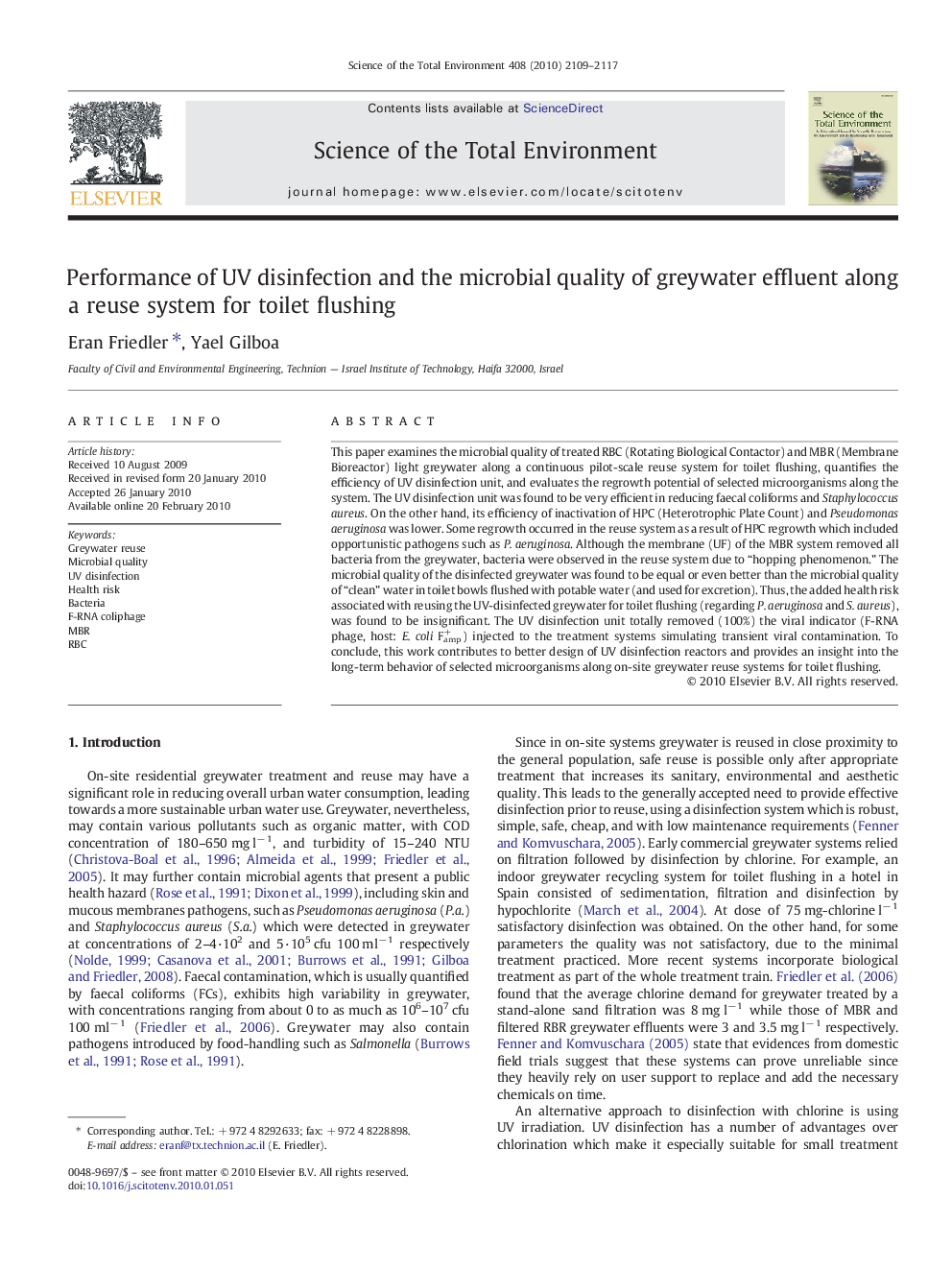| Article ID | Journal | Published Year | Pages | File Type |
|---|---|---|---|---|
| 4431482 | Science of The Total Environment | 2010 | 9 Pages |
This paper examines the microbial quality of treated RBC (Rotating Biological Contactor) and MBR (Membrane Bioreactor) light greywater along a continuous pilot-scale reuse system for toilet flushing, quantifies the efficiency of UV disinfection unit, and evaluates the regrowth potential of selected microorganisms along the system. The UV disinfection unit was found to be very efficient in reducing faecal coliforms and Staphylococcus aureus. On the other hand, its efficiency of inactivation of HPC (Heterotrophic Plate Count) and Pseudomonas aeruginosa was lower. Some regrowth occurred in the reuse system as a result of HPC regrowth which included opportunistic pathogens such as P. aeruginosa. Although the membrane (UF) of the MBR system removed all bacteria from the greywater, bacteria were observed in the reuse system due to “hopping phenomenon.” The microbial quality of the disinfected greywater was found to be equal or even better than the microbial quality of “clean” water in toilet bowls flushed with potable water (and used for excretion). Thus, the added health risk associated with reusing the UV-disinfected greywater for toilet flushing (regarding P. aeruginosa and S. aureus), was found to be insignificant. The UV disinfection unit totally removed (100%) the viral indicator (F-RNA phage, host: E. coli Famp+) injected to the treatment systems simulating transient viral contamination. To conclude, this work contributes to better design of UV disinfection reactors and provides an insight into the long-term behavior of selected microorganisms along on-site greywater reuse systems for toilet flushing.
